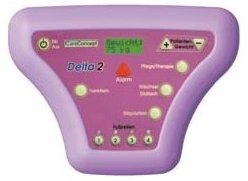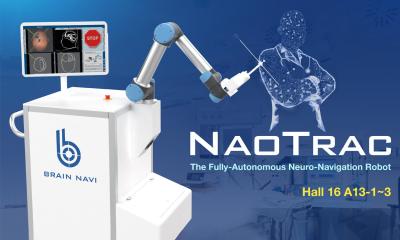Article • Patient safety & products
What's a dynamic mattress?
Dynamic mattresses, also called alternating air pressure mattresses or replacement mattress systems, have air cells that alternately inflate and deflate in a cycle to relieve pressure on the body.

They are used to prevent and treat decubitus ulcers. Indications, such as skin moisture, pulmonary conditions, wounds and activation of the patient, possible contra-indications and limitations such as spasticity and permanent pain must be assessed on a case by case basis for individual patients. In short: the selection process for a dynamic mattress needs to take into account a patient’s overall situation.
Some patients voice subjective ‘contra-indications’ such as the noise of the electric components of a dynamic mattress system, mattress buoyancy or the tubes that connect the cells. Modern systems, however, are silent and the components are integrated (Fig. 1). There are also concerns that, in an emergency, e.g. during a cardiac event, the cells do not deflate quickly enough.
Development of systems with the nurses’ cooperation
Dynamic mattress technology was developed in cooperation with caregivers – a smart move, because they will work with the system and know the patients’ and staff requirements and needs. Several details have stood the test: all control units are integrated in the mattress, air tubes and cables are hidden and can no longer be detached accidentally, which reduced false alarms and improved overall mattress performance.
An easy-to-read control unit offers settings such as nursing or therapy, which ensure maximum pressure even during nursing procedures. This function is limited to 15 minutes, which corresponds with the average duration of nursing and therapy measures, e.g. body hygiene. After those 15 minutes the system automatically returns to the original mode.
With immobile patients the heel is a particularly vulnerable part of the body. Fabry explained that gangrene (he never used the word decubitus) occurs when wounds or similar leg damages, e.g. caused by fracture, required the foot to be held upright on the heel for an extended period. This exerted pressure on the heel, which may turn into infections, pain and excessive moisture.
Therefore, modern mattresses must offer a heel area that allows cells to be emptied completely without causing fenestration oedema.
The cooperation of intended users in the design and development of new products is thus always fruitful. It can significantly reduce the number of customer complaints and operator errors – which can occur despite the best training.
External link: "How To Get Mold Out Of A Mattress" – provided by SleePare
28.10.2008









